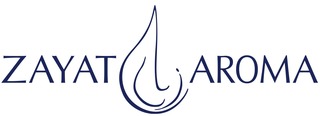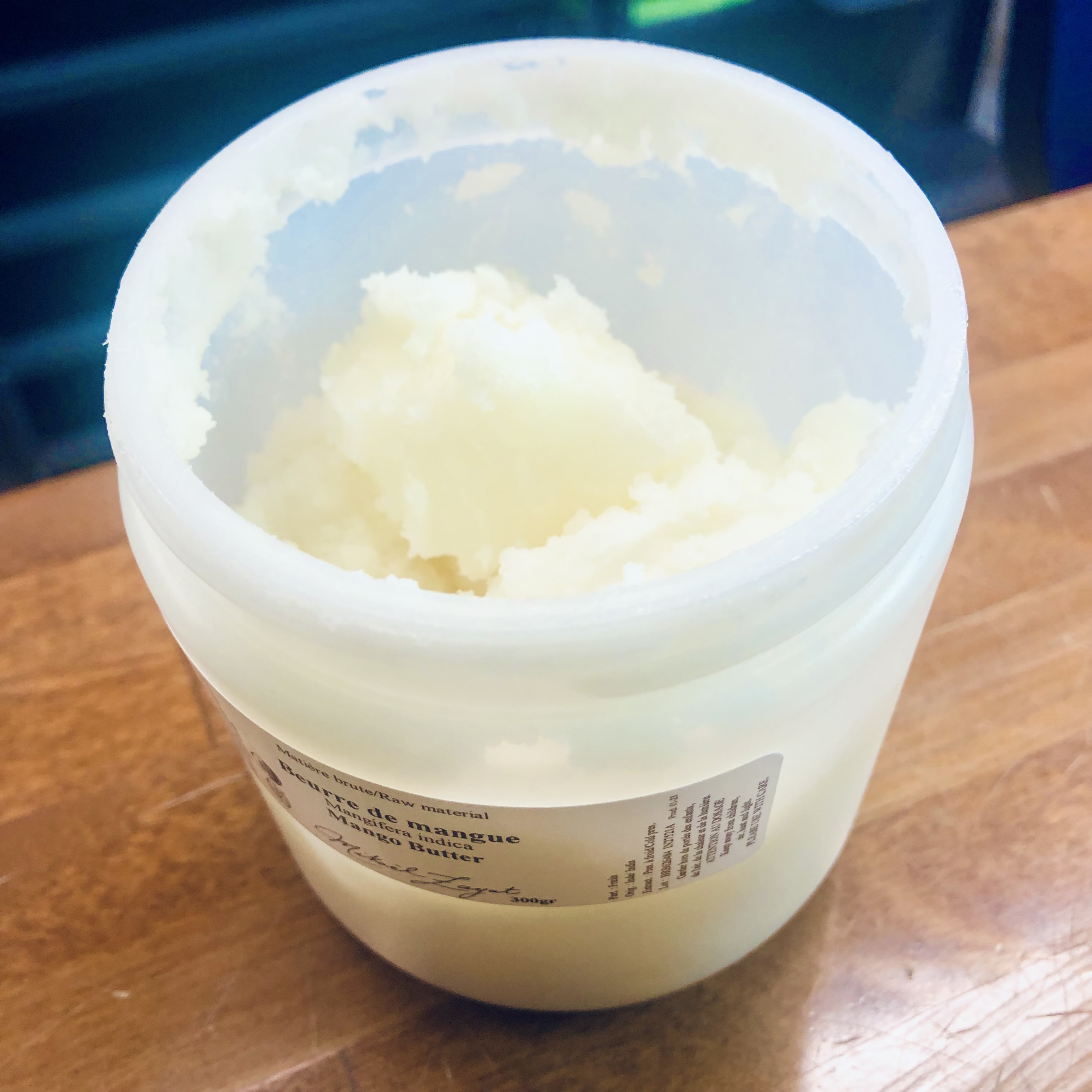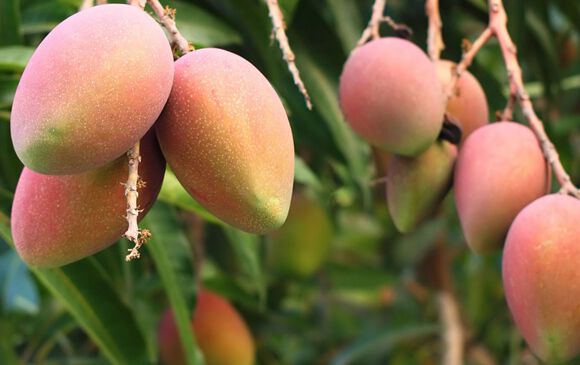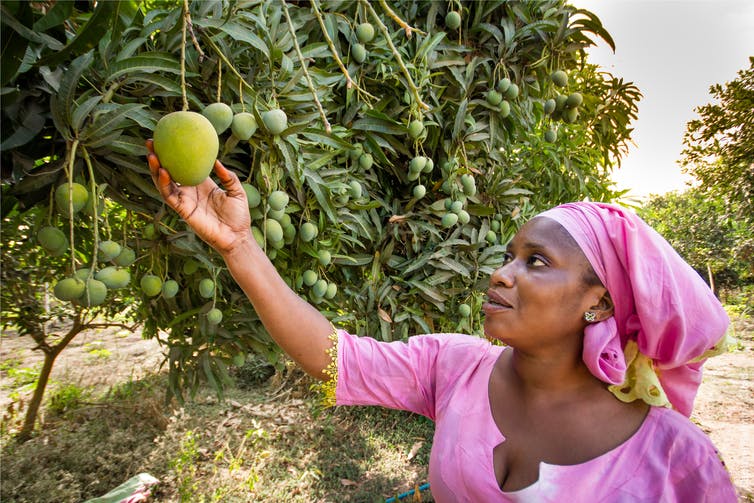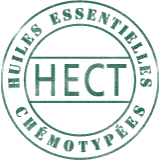Mango butter,
Mango butter, organic India 
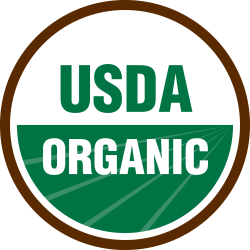
Butters & gels
Botanical name: Mangifera indica
Plant Part: fruits
Extraction method: cold pressed
Origin: India
| 16.00$ |
Free shipping for online orders of more than 69$, before taxes, within Canada.
(View the maximum available formats for free delivery)
Cautions and warnings:
Do not use pure essential oils. Essential oils are diluted in a vegetable oil when applied to the skin. Carry out a skin tolerance test in the crook of your elbow and wait 48 hours before using the oil on the skin. Do not use the essential oil if you notice a reaction such as redness, itching or stinging.
Keep out of reach of children.
If accidental ingestion occurs, seek urgent medical attention or contact a Poison Control Center.
Avoid contact with eyes and mucous membranes. Essential oils should not be applied to the eyes, the eye contour area, neither into the ears. In case of contact, apply a plenty of vegetable oil and take promptly medical advice.
If symptoms persist or worsen when using essential oil, consult a health care practitioner.
If you have epilepsy or asthma, consult a health care practitioner prior to use.
Avoid exposure of applied area(s) to the sun.
Contraindications:
If you are pregnant or breastfeeding, do not use essential oils.
Known adverse reactions:
If you experience nausea, dizziness, headache or an allergic reaction, discontinue use.
Storage:
Store in airtight, light-resistant container at room temperature.
Responsibility:
The information contained on our site is presented purely for information purposes and cannot, in any case, bind the responsibility of the company. In no way does this information constitute a recommendation for preventive or curative treatment, prescription or diagnosis, nor should it be considered as such.
 Words by Mikaël
Words by Mikaël
In medieval India, the Indo-Persian poet Amir Khusrow called the mango "Naghza Tarin Mewa Hindustan" ("the most beautiful fruit of Hindustan").
The mango is at the origin of the "cashmere" design found on many fabrics in India or in the region of India.
And with good reason, cultivated for over 4000 years, the soft, luscious and brightly colored flesh of this Indian native is pure heaven.
At the heart of the fruit hides a large flat seed in which there is a rich butter.
Famous for its moisturizing qualities, mango butter contains a host of skin-rejuvenating and protective antioxidants.
Its smooth texture and its ability to be used by all skin types ensure it a place of choice in preparations of all kinds for the skin and hair.
 Words by Anny Schneider
Words by Anny Schneider
Rich in oleic acid and stearic acid, in squalenes and in phytosterols, this mango butter gives a very nourishing, emollient and softening type of vegetable fat , ideal for the care of dehydrated skin and hair.
Its creamy texture makes it easy to spread, and, with essential oils or hydrosols added, it makes an excellent base or skin care cream .
It is often used in the composition of lip balms, body butters, after-sun care products and soaps.
Origin
Mango butter extracted by pressing and crushing the kernels of the fruit of the mango tree in India.
Mango butter has no particular smell, it does not smell like "mango".
Properties
Rich in oleic and stearic acid, squalenes and phytosterols, this mango butter gives a very nourishing, emollient and softening type of vegetable fat, ideal for the care of dehydrated skin and hair.
Suggestions for use
Composition of lip balms, body butters, after-sun care products and soaps.
It is odorless and can be scented as needed.
Cautions
Keep away from children, air, heat and light.More information
The mango tree is a large tropical tree of the Anacardiaceae family.
It is native to India but currently grows in all the tropics.
It has magnificent evergreen foliage, dense and of a beautiful dark green.
The fruit, the mango, can weigh up to 2 kg for cultivated species.
Owning one or more mango trees is a sign of wealth in many parts of the world.
In the 16th century, Mughal Emperor Akbar had an orchard of 100,000 mango trees planted in Darbhanga Gardens.
From Africa, the Portuguese brought it to Brazil and it spread to the New World.
The first cultures in Florida, due to Dr. Henry Perine, date from 1833; the fruit reached California in the 1880s.
Today, the mango is cultivated in all the tropical and subtropical countries of the globe, and several hundred different species are known, of which only a few are marketed.
In the state of Punjab in India, at Burail, grows a mango tree 20 m high, 10 m in circumference, with branches 4 m in circumference and over 25 m in length, which yields 17,000 kilos of mangoes per year.
For further information about this product or to inquire about larger quantities, please send us an email and we will get back to you as soon as possible.
The availability and price of this product may vary without prior notice, if for some reason the quantity you have requested is currently unavailable, we will contact you shortly to discuss the best options to fulfill your needs.
Log in
Subscribe to our newsletter here!
All rights reserved © 2024 - ZAYAT AROMA
Terms & conditions | Security & privacy
